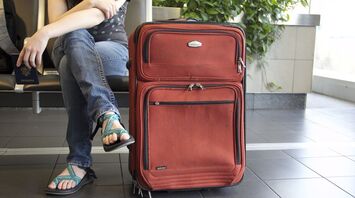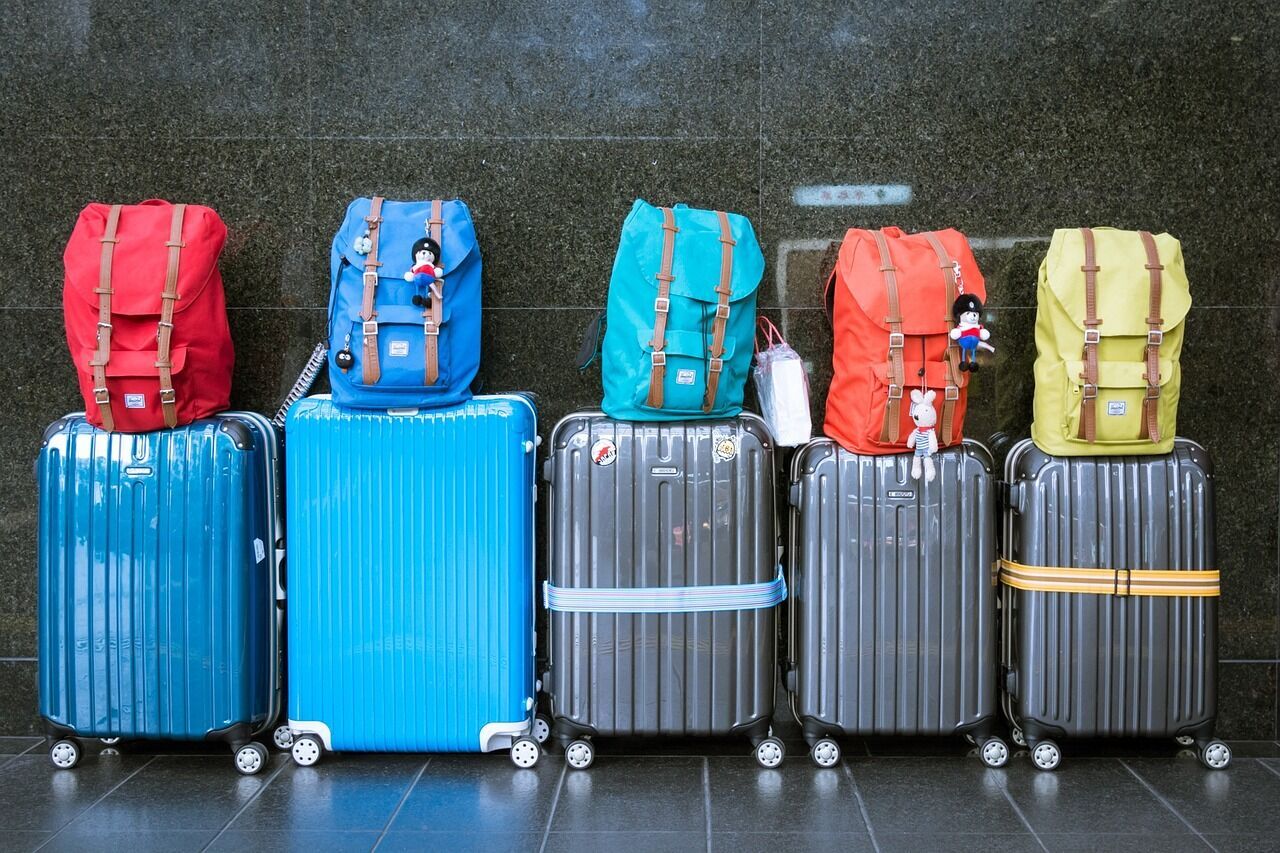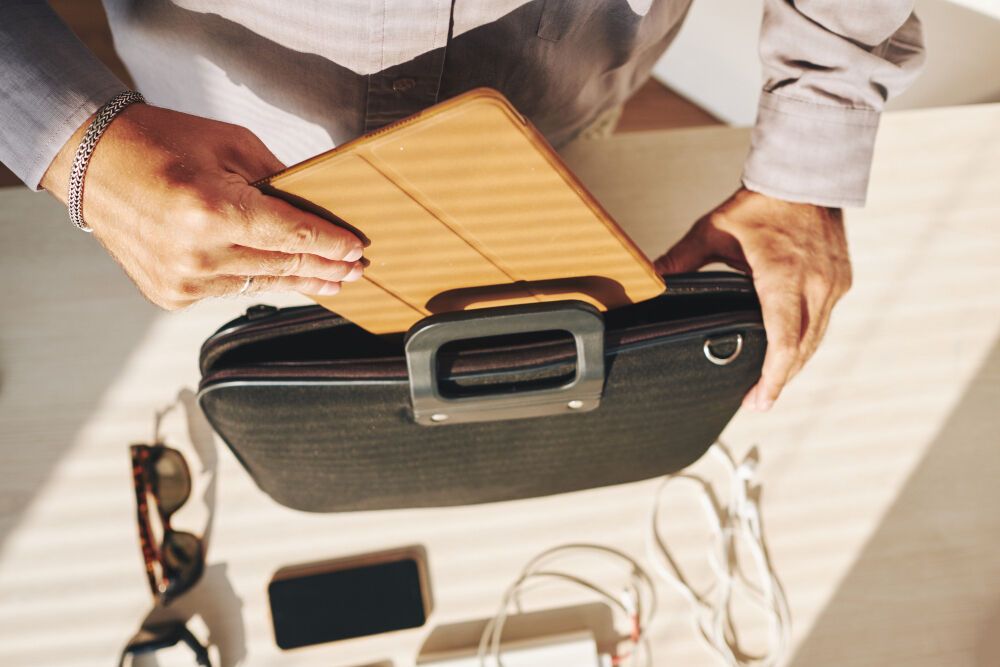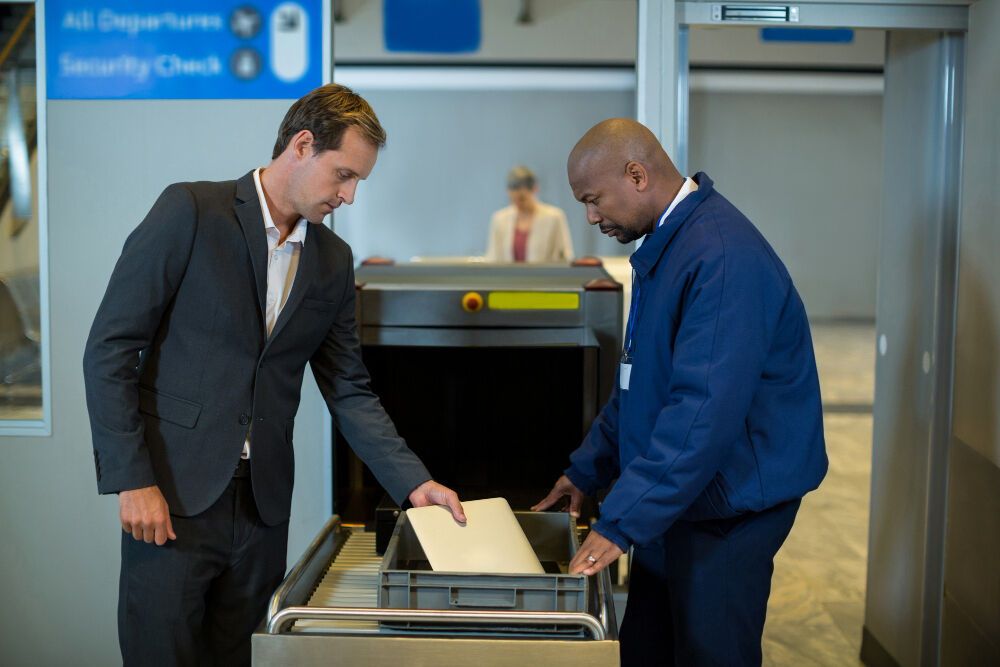Pros and cons of hand luggage and checked baggage: differences in size, cost and comfort and what is the benefit for the passenger

Regularly flying travelers sooner or later wonder whether to pack light or pack a full suitcase. Which is better – hand luggage or checked baggage? On the one hand, you can take the necessary things in the cabin and not pay for luggage. On the other hand, sometimes you need the opportunity to pack more things and not worry that your bulky bag will not fit into the cramped top shelf.
Taking into account the fees, waiting time, risks of damage, and loss of luggage, the question of what is better to take with you on an air trip – hand luggage or luggage, comes down to determining your main priority during the trip. Money, comfort, or time? Whichever of these factors weighs in your favor will determine how your next trip goes.
This quick guide to the pros and cons of carry-on and checked luggage will help you make the right decision.
The checked baggage debate

Travel experts from Travel Made Simple are convinced that flying with carry-on luggage is much easier and more relaxing, as in this case, the airline cannot lose your luggage. SITA, on the other hand, cites positive statistics that the airline industry has reduced the number of lost luggage by 50%. On the other hand, you still have the risk of being in the remaining 50%, and damaged or lost luggage is a nightmare for any traveler.
Before embarking on a flight, travelers should remind themselves of their baggage rights and the actions they can take if their luggage gets lost in transit or damaged. Some travelers try to protect themselves in other ways by flying exclusively with carry-on luggage. But others prefer to pay a baggage fee just to save themselves from trying to fit everything they need into a compact carry-on bag.
When thinking about what's better – hand luggage or checked baggage – before traveling, don't look for the perfect answer for all occasions. It's better to determine which option is right for your next trip.
Questions to ask yourself before traveling:
- Will you need extra space for souvenirs? Will you be able to ship them if necessary or will you be bringing them yourself on the way back?
- Will you be able to get by with just a few items on this trip, or do you have several activities planned that will require a varied closet and more?
- Do you prefer to carry more stuff when traveling or do you feel more free with a small amount of stuff?
- If you only pack the bare minimum, will you need to buy anything locally? Would this not exceed the cost of checked baggage where you could bring everything with you from home?
- Would you be willing to take all your belongings with you on the plane rather than leave them at check-in?
What is hand luggage?
Hand luggage is luggage that travelers can take with them into the cabin. Checked baggage, on the other hand, is checked for transportation in the cargo hold of the airplane.
In the cabin of an airliner, there are places provided for storing hand luggage. They are located under the seats or in overhead lockers. The designation of hand luggage varies from airline to airline and from country to country, for example, "hand baggage" or "cabin luggage".
What can I carry in my hand luggage?
The pros and cons of hand luggage and checked baggage are convincing on both sides of the debate. But before making a final decision, it is worthwhile to carefully consider what you can carry in your hand luggage.
The ideal way to travel with confidence is to always check the airline's rules so you don't take any of the prohibited items. But for starters, you can stick to a list of basic items that you can pack in your hand luggage:
- travel documents, passport;
- money;
- valuable items, such as jewelry;
- medications you take regularly;
- electronics;
- toiletries (toothpaste and toothbrush, etc.).
What are the maximum carry-on baggage sizes?
According to the International Air Transport Association (IATA) guidelines, the maximum dimensions for hand luggage are: maximum length 56 cm (22 inches), width 45 cm (18 inches), and depth 25 cm (10 inches). These limits must include all side pockets, handles, wheels, etc.
These rules are not unambiguous. Individual airlines may change the size and weight requirements for carry-on luggage. This is influenced by various factors, such as the model of the airplane and the booking class. Therefore, to avoid getting caught out with hand luggage restrictions at the airport, study carefully the rules of the airline you intend to fly with before packing your hand luggage.
What are the differences between checked baggage and hand luggage?
Deciding whether checked luggage or hand luggage is better for you will help you compare the main differences: size restrictions and access to the bag during the flight.
Hand luggage is more compact and has a much lower weight limit than checked baggage. It is carried in the cabin of the airplane, while luggage is carried in its cargo hold, which is inaccessible to passengers during the flight. After landing, if you have only carry-on luggage with you, you can leave the plane with it and go about your intended business. If you are traveling with luggage, you need to proceed to the baggage claim area and wait for your suitcase. This is what makes up the main differences between checked baggage and hand luggage.
Are hand luggage and personal items the same thing?

The distinction between the two is a bit blurred, but still, carry-on luggage is not the same as personal belongings. Both bags from these two categories are taken by the passenger into the cabin and stowed in the overhead compartment or the space under the seat.
However the size of personal items is more compact than the allowable carry-on size. For example, American Airlines has set such limits for personal belongings as 18*14*8 inches and smaller, while the maximum size of carry-on baggage for this company is 22*14*9 inches.
As an example, a passenger's personal belongings can be small purses, wallets, laptop bags, etc. Usually, he can take one such thing in addition to the carry-on baggage.
Is hand baggage free?
In the matter of paying for hand luggage, the policy of airlines varies. Some carriers allow to carry both hand luggage and personal belongings free of charge. Others allow you not to pay only for personal belongings that fit under the seat, but for a small bag that must be placed in the compartment above, you have to pay extra.
What is checked baggage?
Checked or checked baggage is a bag or suitcase that a passenger checks in at the airport. This baggage is placed in the cargo hold of the airplane. The reasons for checking in baggage may vary: size, weight, or the presence of items that are not allowed to be carried in hand luggage. The advantages of checked baggage over hand luggage are that the passenger will be able to take more things with him and will not have to carry a bag with him at the airport. In addition, it is allowed to pack some items in checked baggage that are not allowed to be taken in hand luggage.
What are the allowable dimensions of checked baggage?
Despite the fact that this type of baggage is much larger in size and weight than hand luggage, it also has maximum limits. They also differ from airline to airline, region to region, and country to country. But often have these parameters: weight up to 50 pounds and dimensions in length, width, and height of 62 inches or less. As with carry-on luggage, check the allowable parameters before packing your suitcases to avoid getting into an unpleasant situation at the airport.
How much does it cost to check in my luggage?
Many travelers believe that carry-on luggage is better than checked baggage because the latter is more expensive. Baggage check-in fees vary depending on the airline, the number of pieces you check in, and your destination.
Some airlines have different methods of rewarding passengers for putting their luggage in the cargo hold. For example, they give a discount or waive checked baggage fees if the passenger books a premium cabin ticket, has elite airline customer status or a credit card whose terms allow free checked baggage, or provides military discounts. Southwest Airlines, for example, provides free for the first two checked bags.
Baggage, hand luggage and queues

Air travel is always a wait in line. The choice of luggage you take with you to the airport can affect how long and in what lines you will stand. For example, if you don't check your suitcase as luggage, you'll be able to get past the line at the check-in counter straight to security with your carry-on and e-ticket.
If you checked your bags and are traveling without carry-on luggage, however, you'll likely be able to move through the TSA lines more quickly. But you'll have to wait for your luggage in the reclaim area when you arrive.
What's better – check your suitcase as baggage or carry-on?
Airlines for America surveyed air travelers on how they think it's best to travel – with carry-on luggage or checked baggage. It showed some interesting results: most of them prefer to check their bags into their luggage, even though check-in fees have increased.
Airlines actively encourage travelers to check their bags into luggage, so the idea of saving money by taking only a carry-on bag is not always relevant. For example, if you pay extra for priority boarding to keep your bag close by, you're swapping one paid service for another. Consider a few options:
- a passenger can save money by taking their bag as carry-on luggage (making sure the airline doesn't charge a fee for this beforehand);
- the passenger can save time by paying for priority boarding and taking his/her bag with him/her;
- a passenger wants to travel as comfortably as possible, so he checks in his luggage, making sure that he has packed all the items he needs for the near future in his hand luggage.
Conclusions
Size is not the main difference between luggage and hand luggage. Determine what you will take with you on your trip by considering the type of trip, waiting time, cost of luggage, and your strength to carry the bags. For example, if you need to move quickly through the airport to catch a connecting flight, hand luggage that you'll have to carry in your hands could be a problem.
Luggage and hand luggage have their pros and cons. Weigh them to arrive at the best choice for your particular trip.



















